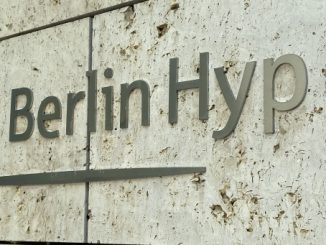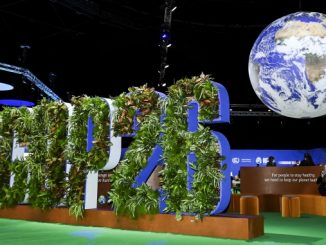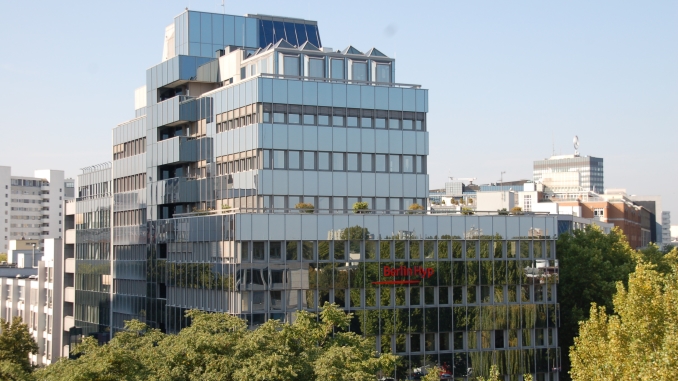
Six years after the germination of the idea, the first Green Pfandbrief is coming to fruition thanks to careful nurturing by Berlin Hyp and its partners. Here, they discuss the credentials and potential of an investment that promises to be sustainable in more than one sense of the word.
Sponsored by Berlin Hyp, this special report originally appeared in The Covered Bond Report magazine. Download a pdf of this special report here.
When was the idea to issue a Green Pfandbrief born? Was there any special event that triggered that idea?
Bodo Winkler, head of credit treasury and investor relations, Berlin Hyp: The idea of issuing a Green Pfandbrief was born years ago. Back in 2009, we began developing our initial concepts. These already contained the basic idea of using mortgages secured by commercial real estate that featured either a green building certificate or an energy label verifying a high degree of efficiency. However, the number of loans at the time that met these criteria was limited, so we put the project on hold. Since then we have seen an increasing number of certified buildings that meet high standards in terms of energy efficiency, in addition to other environmental aspects, such as water or waste management, as well as social issues. Last autumn, we returned to our Green Pfandbrief project and began fleshing out the concepts further. We kept the idea of using certified green buildings as eligible assets, which is still the basis for Berlin Hyp’s Green Pfandbrief.
Why is Berlin Hyp launching a Green Pfandbrief?
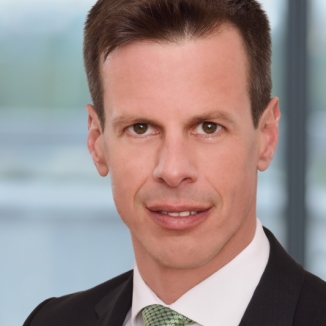 Winkler, Berlin Hyp: There are several reasons for issuing the Green Pfandbrief. First of all, Berlin Hyp’s core business is commercial real estate lending. Quite a lot of our mortgages are collateralised by green buildings, so issuing a Green Pfandbrief is the next logical step.
Winkler, Berlin Hyp: There are several reasons for issuing the Green Pfandbrief. First of all, Berlin Hyp’s core business is commercial real estate lending. Quite a lot of our mortgages are collateralised by green buildings, so issuing a Green Pfandbrief is the next logical step.
Secondly, Berlin Hyp has made great efforts to strengthen its sustainability management over the last several years and, as a result, a comprehensive system is now in place today. Despite these efforts, there was still a missing piece: a funding instrument tailored to the needs of green bond investors. Our Green Pfandbrief now closes that gap.
Thirdly, we are witnessing a growing green bond market and an increasing number of SRI (socially responsible investment) investors. Adding environmental and social value is therefore becoming more important to many investors. From our point of view, this is one of the major trends on the capital markets in recent years, and the current environment of low interest rates and negative spreads only serves to drive this development.
Last, but not least, the Pfandbrief itself is a sustainable product. Thus, it fits perfectly into the green bond market.
Dr Julia Haake, director of Paris office, oekom research: Berlin Hyp has recently made important efforts to structure and improve its corporate responsibility policy and management. This was thus fertile ground on which to seed the idea of Green Bond issuance. In particular, Berlin Hyp has been able to build up internal lending guidelines that now allow the bank to identify loans and assets that correspond to specific environmental criteria.
Tanguy Claquin, managing director and head of sustainable banking, Crédit Agricole CIB: Given the efficiency of Pfandbriefe for cheaply financing real estate portfolios and given the importance of energy-efficient real estate for the transition to a low carbon economy, the Green Pfandbrief is a natural fit that many players have been working on since the Green Bond market took off. For Berlin Hyp, the issuance of a Green Pfandbrief should reinforce the dialogue with major ESG investors in Europe. This will be especially true given the high quality of Berlin Hyp’s real estate portfolio and the strong commitment of Berlin Hyp to corporate and social responsibility, which led to a recent improvement in Berlin Hyp’s ESG rating by oekom research.
What evidence is there of demand for such a product?
Steffen Dahmer, syndicate and global product manager for covered bonds, JP Morgan: Well I guess we will only have evidence of the demand once the book is opened and the deal executed. But I can already highlight that investor interest in meetings for the roadshow is overwhelming. I can’t remember any other German Pfandbrief receiving so much interest from investors — especially investors with dedicated “Green” funds, of course. The level of dialogue with clients is similarly outstanding.
Green deals have been done before in other products and we have plenty of evidence that the investor base was different to traditional deals. So we are in no doubt that Berlin Hyp will do a successful deal with a strong share of “new” names.
Claquin, CA-CIB: The Green Bond market has been booming since 2013, and we are expecting the same trend for 2015. Against that backdrop, we are seeing increasing investor demand for diversification in Green Bonds’ structure, underlyings and risk/return. This led in 2014 to the issuance of Green ABS, high-yield, project bonds and thematic covered bonds. For all these transactions, ESG investors have always shown a strong interest. Berlin Hyp’s Green Pfandbrief will be the first of its kind and we are expecting the same type of support.
What are the special features of Berlin Hyp’s Green Pfandbrief?
Haake, oekom: This Pfandbrief is characterised by an overall good sustainability quality. It respects the Green Bond Principles and the issuer itself has received a good ESG rating from oekom research. The use of proceeds of this Pfandbrief is focused on green buildings that not only have obtained an environmental certificate, but also respect a certain number of other environmental and even social criteria. oekom’s analysis of all of the funded “green” buildings has shown that their consolidated sustainability performance in terms of sustainability benefits and risk avoidance and minimisation is good.
Winkler, Berlin Hyp: Berlin Hyp’s Green Pfandbrief combines the best of two worlds. On the one hand, it refinances existing mortgage loans collateralised by green buildings that are already included in Berlin Hyp’s cover pool. Our use of proceeds is such that the amount of these eligible assets is not to fall below the outstanding amount of Green Pfandbriefe. Thus, we apply the cover principle, which is essential to all covered bonds.
On the other hand, the bank will make every effort to use an amount equivalent to the proceeds generated from the issuance of the Green Pfandbrief for financing the construction, refurbishment or acquisition of new green buildings before the bond matures. As a result, we comply with one of the basic tenets of the green bond business: a clearly defined use of proceeds. In addition, the Green Pfandbrief is in keeping with all other aspects of the Green Bond Principles.
What makes the green Pfandbrief of Berlin Hyp different to the ESG Pfandbrief of MünchenerHyp?
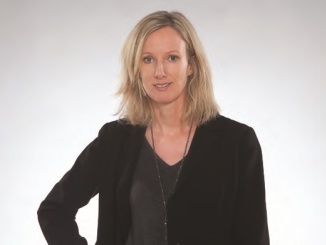 Haake, oekom: The Berlin Hyp Pfandbrief is a Green Bond, focused on green buildings, while the Münchener Hypothekenbank Pfandbrief had a broader focus on social housing cooperatives, with a social rather than environmental emphasis. However, for both issuances, oekom has taken into account environmental as well as social criteria in order to analyse the sustainability risks and benefits from a global perspective.
Haake, oekom: The Berlin Hyp Pfandbrief is a Green Bond, focused on green buildings, while the Münchener Hypothekenbank Pfandbrief had a broader focus on social housing cooperatives, with a social rather than environmental emphasis. However, for both issuances, oekom has taken into account environmental as well as social criteria in order to analyse the sustainability risks and benefits from a global perspective.
Claquin, CA-CIB: First, the Berlin Hyp Green Pfandbrief will refinance eligible assets selected on the basis of their environmental benefits, whereas the ESG Pfandbrief of MünchenerHyp was rather a “social bond”, as it was focused on collective social housing. Second, Berlin Hyp makes a difference between green assets that are already in the pool and future disbursements in green assets: the definition of green assets will be more demanding for future assets than for existing assets. In addition, Berlin Hyp takes practically two commitments: a commitment that the existing cover pool will include green assets for an amount at least equivalent to the net proceeds, and a commitment to make new disbursements to green assets for the same amount.
Bodo mentioned earlier that Pfandbriefe and sustainability are a perfect fit. Does this ring true?
Jens Tolckmitt, chief executive, Association of German Pfandbrief Banks (vdp): Yes, in many ways there seems to be a perfect match. Firstly, Pfandbriefe have been a sustainable form of funding for almost 250 years in the sense that they focus on quality and safety in the interest of investors — and protect them against the insolvency of the issuer. Secondly, in the case of Green Pfandbriefe it is both a promise of the issuer to use the proceeds for future green business — as in unsecured green bonds — plus the green assets are already on the balance sheet. And — last, but not least — Pfandbriefe have in the past repeatedly been used to address the challenges societies have faced, namely the rebuilding of homes or infrastructure after periods of war.
Haake, oekom: The low (financial) risk and long term characteristics of Pfandbriefe of course also represent an advantage from a sustainability perspective. Otherwise, from oekom’s perspective it was more important to be able to analyse the sustainability quality of the financed buildings. When carrying out second opinion assessments, this analysis is carried out independently of the type of bond. We go into as much detail as possible on individual projects. In this case, it was possible to analyse the list of buildings in quite some detail, which is not always possible for green bonds issued by banks. This was thus a real advantage, because Berlin Hyp has good internal mechanisms to be able to identify the necessary information. This is certainly one recommendation for other mortgage banks: it is very important that the internal lending guidelines include environmental and sustainability criteria such as those presented in oekom’s verification framework. This allows for an optimal basis for choosing assets for inclusion in green or sustainable instruments.
Dahmer, JP Morgan: Anyone constructing a building, whether commercial or residential, faces plenty of laws, rules or requirements to reduce energy usage or even to not use external energy at all. And the change in production and usage of energy is nowhere in the world stricter than in Germany — the home market and backbone of Berlin Hyp and its peers. Therefore the potential volume of eligible assets for sustainability bonds is meaningful in the German Pfandbrief market. So to me, it’s the logic next step — now taken by Berlin Hyp.
Do you expect other issuers among your members to issue Green Pfandbriefe? Do you see any trends concerning themes such as green bonds and sustainability within the association?
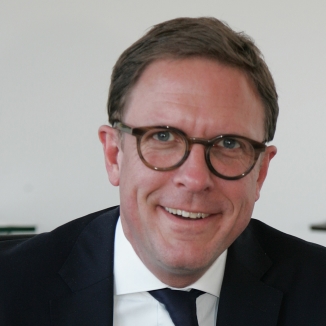 Tolckmitt, vdp: Yes, we expect that to happen. For the above-mentioned reasons, but also because green bonds address a different investor type focused on sustainable investments to whom they offer real added value beyond pure yield considerations. Yield for the time being will remain low given the interest rate environment and the safety inherent to the Pfandbrief product. So, given that a number of banks are looking at this kind of product, the vdp is actively monitoring developments and we are organising the exchange of views among our membership.
Tolckmitt, vdp: Yes, we expect that to happen. For the above-mentioned reasons, but also because green bonds address a different investor type focused on sustainable investments to whom they offer real added value beyond pure yield considerations. Yield for the time being will remain low given the interest rate environment and the safety inherent to the Pfandbrief product. So, given that a number of banks are looking at this kind of product, the vdp is actively monitoring developments and we are organising the exchange of views among our membership.
Covered bonds are new to the green bond market. Could you explain to covered bond investors what is so special about this market?
Claquin, CA-CIB: Green Bonds may look like a mere marketing gimmick, but they shouldn’t be seen as such. The overall objective of this Green Bond market is to create a green debt compartment within the international bond market, which would be large, liquid and deep enough to become a market per se and could start playing a role in the global financing of climate change mitigation. This market is based on several principles: documentation, commitment, transparency, accountability and reporting, which have been formalised in the Green Bond Principles. These have now been supported by the vast majority of market participants.
For a covered bond investor, buying a green covered bond is exactly like buying any other covered bond; the same pricing and the same liquidity, but with a free green option (the access to additional information on the assets financed by the bond) and the knowledge of participating in a market with potential far-reaching consequences for climate change mitigation.
How does pricing of green bonds compare with plain vanilla securities within the same asset class?
Dahmer, JP Morgan: For starters, let’s not forget a few parameters. It’s first and foremost a proper German Pfandbrief within the German Pfandbrief law, using the same practices as all other Pfandbriefe. Any investor who cares for German Pfandbriefe will look at the upcoming deal for that reason, but on top of that we are now going to have new investors who look at it because the sustainability nature of the assets matches their investment criteria.
I am convinced that the new Berlin Hyp deal will end up looking attractive for all investors — both traditional and new. I am expecting a fair deal, from an issuer known for being fair, that takes into account all objectives.
We have already seen an ESG Pfandbrief from MünchenerHyp, now Berlin Hyp’s Green Pfandbrief. Is it necessary to set up standards for the different types of sustainable instruments?
Haake, oekom: The sustainability standards that oekom establishes are different for every issuance. However, this is linked rather to the assets chosen for (re)financing by the issuer than to the type of instrument. For each type of project or initiative that the issuer defines for its use of proceeds, oekom develops a specific set of indicators for its sustainability analysis. For example, renewable energy projects will have a different set of indicators than green buildings or water efficiency improvement projects.
Tolckmitt, vdp: Yes, standardisation of Green Pfandbriefe would certainly help in developing a consistent market that is easy for investors to understand. Besides their inherent safety, simplicity and coherence of product features is one of the key characteristics that appeals to Pfandbrief investors. So it seems a logical step to try to develop a joint understanding for this type of product, too, and the vdp would be a natural platform for driving the debate towards the development of common standards.
Do you think that sustainable Pfandbriefe/covered bonds could become a new asset class with different sub-classes (social, environmental, etc)?
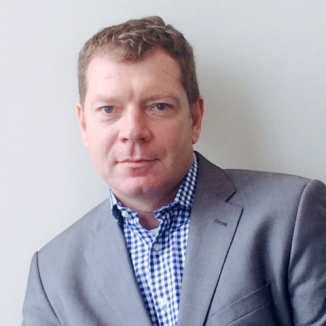 Dahmer, JP Morgan: A new asset class? Those are big words for a market that, in Berlin Hyp’s upcoming project, is witnessing only its first benchmark deal, since MünchenerHyp’s successful ESG deal in 2014 was Eu300m. As mentioned earlier, the potential is meaningful — in terms of production — and the appetite is meaningful, too — in terms of investors.
Dahmer, JP Morgan: A new asset class? Those are big words for a market that, in Berlin Hyp’s upcoming project, is witnessing only its first benchmark deal, since MünchenerHyp’s successful ESG deal in 2014 was Eu300m. As mentioned earlier, the potential is meaningful — in terms of production — and the appetite is meaningful, too — in terms of investors.
So it has all the ingredients to see ongoing issuance, but on the other hand the amount of work — with all the reporting and monitoring — is enormous, and the overall trend of bank deleveraging and bank regulation hasn’t gone away. I nevertheless believe the Green product will find its place in the Pfandbrief and wider covered bond market.
I personally doubt that the market will make the effort to differentiate sub-classes as long as the market is so small, but I am pretty sure that the new dedicated funds will have a clear opinion which of the different types of sustainable asset pools they like and which they don’t like.
While this green trend will clearly stay with us, the future will teach us how big and important it will be for Pfandbriefe and covered bonds.
Tolckmitt, vdp: I would not necessarily call it a new asset class as the Green Pfandbriefe we are talking about now are basically classical Mortgage Pfandbriefe with earmarked underlying green assets. I do think this understanding is also important to investors who can rely on the traditional safety features of the German Mortgage Pfandbrief whilst at the same time benefitting from the underlying sustainable business.
We at the vdp have already been closely looking at ways of transferring the Pfandbrief idea to other sustainable asset classes like renewable energy, which would be genuinely new asset class. And while this could be a really interesting route to go down, it turns out that doing this is no small matter if you do not want to put the traditional credit quality of the product at risk. But we continue to work on this. It is clear, though, that — if we will be successful at all — it will be a medium to long term project.
Oekom provided a Second Party Opinion (SPO) for both Berlin Hyp’s and MünchenerHyp’s bonds. What does this constitute? Do investors require such a SPO and what do they take out of it?
Haake, oekom: Green Bond investors, and especially responsible investors, have repeatedly asked for comprehensive information on the environmental and sustainability quality of the invested bonds. Second party opinions aim to provide such information.
Oekom’s mandate for Berlin Hyp consisted of, firstly, providing a comprehensive verification framework containing indicators covering all environmental and social challenges linked to the asset chosen by Berlin Hyp. In a second step, this framework allowed for analysing the “green” quality of the Pfandbrief and how Berlin Hyp addresses the environmental and social risks linked to the “green” buildings financed. oekom’s overall positive opinion on the Green Pfandbrief provides responsible investors with the assurance that a highly demanding rating agency has applied stringent criteria and has carried out a thorough analysis. For example, oekom has verified that the buildings financed through this Pfandbrief are all certified against a green building or energy efficiency certificate, that all buildings are situated within less than one kilometre of a public transport station and that the buildings do not host any controversial activities that some responsible investors exclude from their portfolios (such as military, pornography, tobacco, etc.).
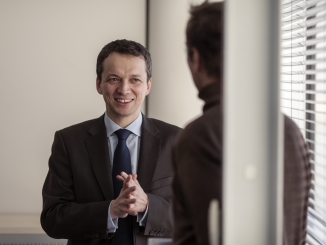 Claquin, CA-CIB: A good quality Second Party Opinion is a key element for the success of a Green Bond issuance. In fact, the market cannot work if issuers and underwriters decide for themselves what is green and what is not. Providing an independent third party review is the role of second opinions. In this particular transaction, oekom research played an important role in the validation of the Berlin Hyp’s Green Pfandbrief framework, the selection of the cover assets, and the assessment of the contribution of these assets to clear environmental benefits. Investors take out of such an SPO the assurance that the assets of the Green Pfandbrief contribute actively to energy transition and climate change mitigation in the real estate sector. In addition, in its Green Pfandbrief framework, Berlin Hyp is committed to publishing at least annually the composition of the cover pool and some detailed information on the eligible assets on a dedicated webpage. This reporting will also be verified by oekom research.
Claquin, CA-CIB: A good quality Second Party Opinion is a key element for the success of a Green Bond issuance. In fact, the market cannot work if issuers and underwriters decide for themselves what is green and what is not. Providing an independent third party review is the role of second opinions. In this particular transaction, oekom research played an important role in the validation of the Berlin Hyp’s Green Pfandbrief framework, the selection of the cover assets, and the assessment of the contribution of these assets to clear environmental benefits. Investors take out of such an SPO the assurance that the assets of the Green Pfandbrief contribute actively to energy transition and climate change mitigation in the real estate sector. In addition, in its Green Pfandbrief framework, Berlin Hyp is committed to publishing at least annually the composition of the cover pool and some detailed information on the eligible assets on a dedicated webpage. This reporting will also be verified by oekom research.
Winkler, Berlin Hyp: We like oekom’s approach to formulating their second-party opinions, as it take three aspects into consideration: the alignment of the bond’s formal concept, defined processes and disclosures with the Green Bond Principles; the sustainability performance of the issuer; and the overall sustainability quality of the bond. The last criterion has the biggest impact on oekom’s overall evaluation. We have discovered that investors value this approach; what’s more, oekom has an impeccable reputation as a second-party opinion provider on the green bond market. That, of course, means that working with them is very challenging as their requirements are high, which was exactly what we wanted. In the end, we received the honest feedback of an independent second party on the sustainability of our Green Pfandbrief — and especially with regard to the environmental value it adds. This feedback has led us to increase the sustainability of our bond by adding additional features, such as setting even higher requirements for new eligible assets than those of existing ones.
We understand that investors ask for SPOs. As there is no explicit definition of green bonds, it helps them assess the sustainability of their investment and makes it easier to understand the environmental value this investment adds.

